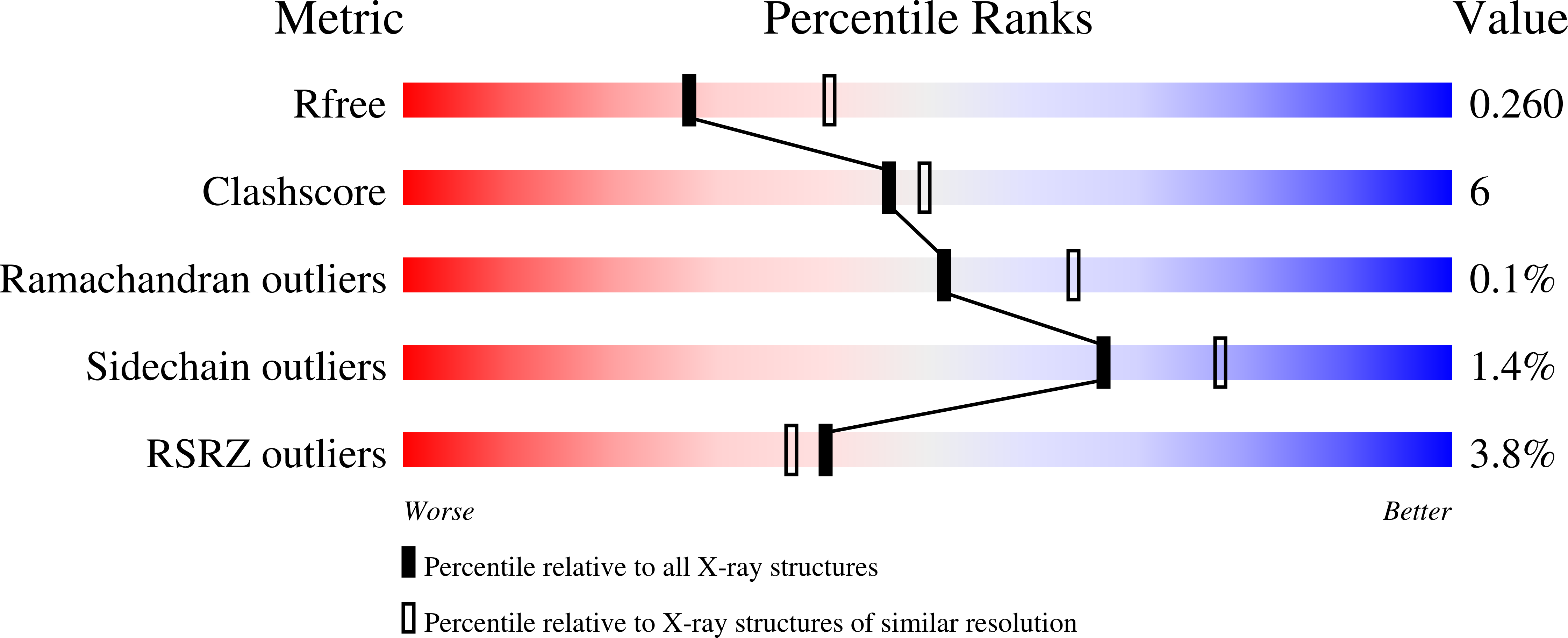Structure of a lipid-bound extended synaptotagmin indicates a role in lipid transfer.
Schauder, C.M., Wu, X., Saheki, Y., Narayanaswamy, P., Torta, F., Wenk, M.R., De Camilli, P., Reinisch, K.M.(2014) Nature 510: 552-555
- PubMed: 24847877
- DOI: https://doi.org/10.1038/nature13269
- Primary Citation of Related Structures:
4P42 - PubMed Abstract:
Growing evidence suggests that close appositions between the endoplasmic reticulum (ER) and other membranes, including appositions with the plasma membrane (PM), mediate exchange of lipids between these bilayers. The mechanisms of such exchange, which allows lipid transfer independently of vesicular transport, remain poorly understood. The presence of a synaptotagmin-like mitochondrial-lipid-binding protein (SMP) domain, a proposed lipid-binding module, in several proteins localized at membrane contact sites has raised the possibility that such domains may be implicated in lipid transport. SMP-containing proteins include components of the ERMES complex, an ER–mitochondrial tether, and the extended synaptotagmins (known as tricalbins in yeast), which are ER–PM tethers. Here we present at 2.44 Å resolution the crystal structure of a fragment of human extended synaptotagmin 2 (E-SYT2), including an SMP domain and two adjacent C2 domains. The SMP domain has a β-barrel structure like protein modules in the tubular-lipid-binding (TULIP) superfamily. It dimerizes to form an approximately 90-Å-long cylinder traversed by a channel lined entirely with hydrophobic residues, with the two C2A–C2B fragments forming arched structures flexibly linked to the SMP domain. Importantly, structural analysis complemented by mass spectrometry revealed the presence of glycerophospholipids in the E-SYT2 SMP channel, indicating a direct role for E-SYTs in lipid transport. These findings provide strong evidence for a role of SMP-domain-containing proteins in the control of lipid transfer at membrane contact sites and have broad implications beyond the field of ER-to-PM appositions.
















